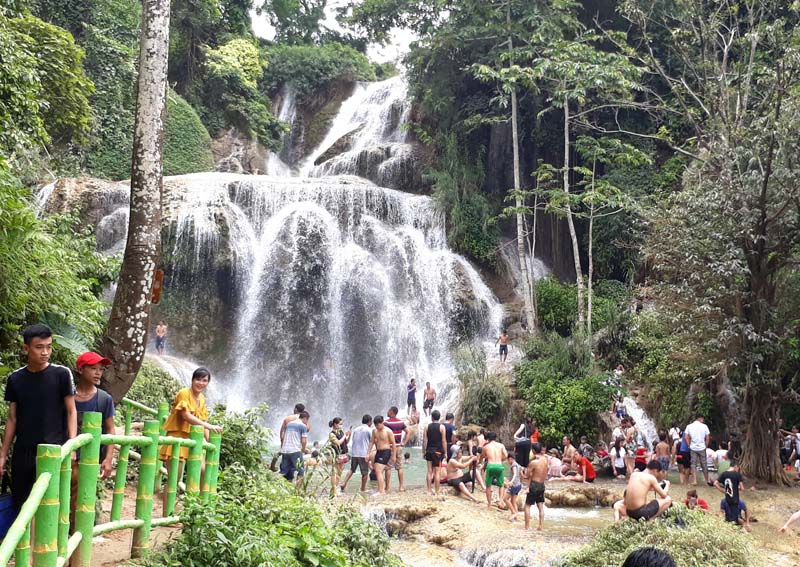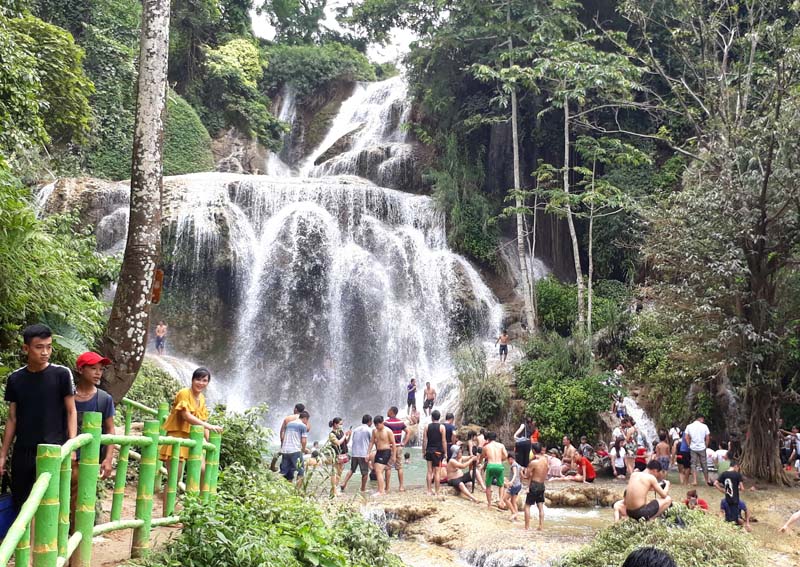


 In the summer, the
spectacular and cool beauty of Mu Waterfalls, Tu Do commune (Lac Son) has been
continuing to create a strong attraction for many visitors.
In the summer, the
spectacular and cool beauty of Mu Waterfalls, Tu Do commune (Lac Son) has been
continuing to create a strong attraction for many visitors.
The waterfall is located in Mu hamlet at an altitude of over 1,000 m in the first section of the majestic Truong Son range. In the summer from April to October, the water flow from the natural mother is so abundant, pure and strong from upstream is generously pouring down to form a beautiful white cascade.
Mr. Bui Chuan, the representative of the scenic management board of Mu waterfalls, says that on the peak days, the Management Board sold nearly 2,000 visiting tickets. This figure shows the strong attraction of Mu Waterfalls. At the same time, it has posed the challenges that require the management agencies and specialized forces to continue improving the operational efficiency in order to preserve the attractive and untouched beauty of the waterfalls, making visitors happy with the travel product they are experiencing.
From April 2018, Mu waterfall has officially been exploited as a typical local community tourism product by Lac Son district. After investing in some essential items at the waterfall bathing area and collecting entrance tickets according to the regulations of 10,000 as a typical local community tourism product a person (free entrance fees for Tu Do commune residents, the children and youths under 15), the services here are initially meeting the needs of the visitors.
Coming to the scenic area of Mu waterfall, first of all visitors will enjoy the fresh air of nature, enjoying swimming in the cool water stream to dispel the muggy heat of summer. After taking a bath, resting right at the nearby shacks, visitors can enjoy the unique and well-cooked traditional dishes in the way of indigenous Muong ethnic people such as rock snails, stone crabs with garlic sauce, and fried fish with the leaves from piper sarmentosum, grilled mountainous chicken, steamed mixed vegetables, frogs braised with sour bamboo shoots and so on.
After a rustic specialty meal, visitors continue visiting Mu waterfall to have other interesting experiences such as learning about the culture, the customs, the habits, the living and working activities of the indigenous people; sleeping in the traditional stilt houses of Muong ethnic people in Lac Son; burning camp fire, drinking jars of wine, dancing and singing with the public performance team of Tu Do commune in the flickering light of fire.